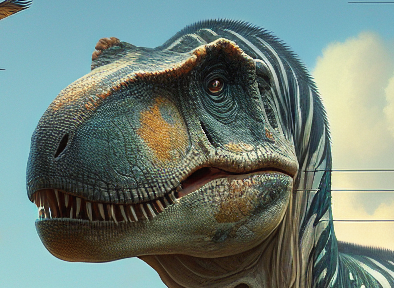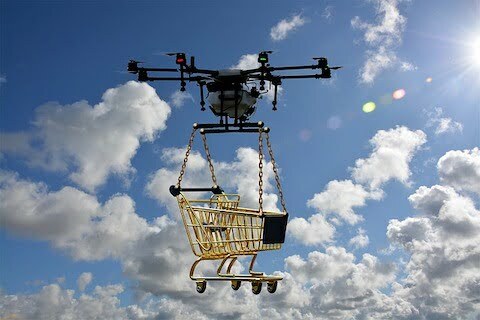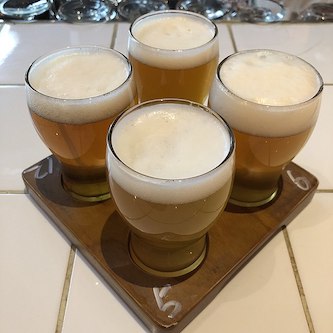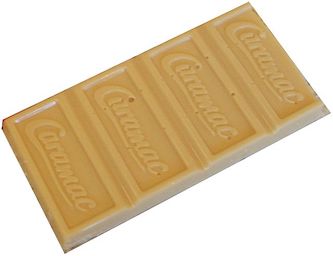Scientists have found out what a 75-million-year-old tyrannosaur ate for its last meal. It turns out that it had two baby dinosaurs as its meal. This new discovery tells us more about how these predators ate. The remains of the tyrannosaur and the small dinosaurs it ate show that tyrannosaurs changed what they ate as they grew. The dinosaur they found is a young gorgosaurus, which is a close relative of the T. rex. It was about seven years old and weighed around 330kg when it died. They found the hind legs of two small bird-like dinosaurs called citipes under its ribcage.
Before this discovery, scientists already knew that adult gorgosaurs hunted and ate large plant-eating dinosaurs. They knew this because they found bite marks on the bones of the larger dinosaurs that matched the teeth of the tyrannosaurs. Adult tyrannosaurs would eat anything, attacking big prey and biting through bone to get to the meat. But the smaller, younger tyrannosaurs couldn’t hunt big plant-eaters yet. Instead, they probably went after smaller, young dinosaurs.
They found the fossil with the young gorgosaurus and its prey in the Alberta Badlands in 2009. It took a few years to prepare the fossil, and they didn’t realize there was prey inside right away. Eventually, they found the complete hind legs of two baby dinosaurs. The scientists think that the gorgosaurus was especially interested in the drumstick part of its prey.
The gorgosaurus is a bit smaller and older than the T. rex. As they got older, gorgosaurs changed. Young ones had longer legs and sharp teeth, while adults had rounder teeth. This special fossil shows that young gorgosaurus had a different way of eating than adults. Adults used their strong teeth to bite and scrape, but the young gorgosaurus picked and even cut up its prey. It bit off the legs and swallowed them whole.
This discovery shows that tyrannosaurs were not just big, scary creatures, but they were also smart eaters. It also changes how we think about the T. rex. In movies like Jurassic Park, the T. rex is shown chasing after cars. But in reality, it would have been the younger, more agile dinosaurs, like the gorgosaurus, that would do that kind of thing.
Original news source: Tyrannosaur’s last meal was two baby dinosaurs (BBC)
Listen:
Slow
Normal
Fast
Vocabulary:
| 1 | tyrannosaur | A type of dinosaur that was very large and powerful |
| 2 | predators | Animals that hunt and eat other animals |
| 3 | discovery | Finding something new or unknown |
| 4 | gorgosaurus | A type of dinosaur that is related to the T. rex |
| 5 | hind legs | The back legs of an animal |
| 6 | prey | An animal that is hunted and eaten by another animal |
| 7 | fossil | The remains of a plant or animal that lived a long time ago |
| 8 | drumstick | The part of a bird’s leg that is used for eating |
| 9 | sharp teeth | Teeth that are pointed and can cut through things easily |
| 10 | scrape | To remove or take away something by rubbing or scraping |
| 11 | agile | Able to move quickly and easily |
| 12 | scary | Causing fear or fright |
| 13 | smart | Having the ability to think and learn quickly |
| 14 | chase | To run after someone or something in order to catch them |
| 15 | reality | The state of things as they actually exist, rather than as they may appear or might be imagined |
Group or Classroom Activities
Warm-up Activities:
– Charades
Instructions: Divide the class into small groups. Each group will take turns acting out different animals or dinosaurs mentioned in the article while the other groups try to guess which one it is. Encourage students to use physical gestures and body language to convey the animal or dinosaur they are portraying.
– News Summary
Instructions: Ask students to read the article individually or in pairs. After they have finished reading, have them write a brief summary of the main points of the article in their own words. They should focus on the discovery of the dinosaur’s last meal and how it changes our understanding of tyrannosaurs’ eating habits.
– Opinion Poll
Instructions: Divide the class into pairs or small groups. Ask students to discuss and share their opinions about the new discovery. They should consider questions such as: What do they find most interesting about the discovery? How does it change their perception of tyrannosaurs? After discussing, have each group present their opinions to the class and facilitate a class discussion.
– Vocabulary Pictionary
Instructions: Create a list of key vocabulary words from the article (e.g. tyrannosaur, gorgosaurus, prey, bite marks, etc.) and write them on separate cards. Divide the class into small groups and give each group a set of vocabulary cards. One student from each group will select a card and silently draw a picture to represent the word, while the other group members try to guess the word. Encourage students to use their knowledge of the article to help them guess.
– Future Predictions
Instructions: In pairs or small groups, ask students to discuss and make predictions about what other interesting discoveries scientists might make about dinosaurs in the future. They should think about how these discoveries could change our understanding of dinosaurs. After discussing, have each group share their predictions with the class.
Comprehension Questions:
1. What did scientists discover about the last meal of the 75-million-year-old tyrannosaur?
2. How did the remains of the tyrannosaur and the small dinosaurs it ate help scientists understand how these predators ate?
3. What kind of dinosaur did they find that had eaten the two baby dinosaurs?
4. How old was the gorgosaurus when it died and how much did it weigh?
5. How did scientists know that adult gorgosaurs hunted and ate large plant-eating dinosaurs?
6. Why couldn’t the smaller, younger tyrannosaurs hunt big plant-eaters yet?
7. Where did scientists find the fossil with the young gorgosaurus and its prey?
8. How did the way young gorgosaurus ate differ from the way adults ate?
Go to answers ⇩
Listen and Fill in the Gaps:
Scientists have found out what a 75-million-year-old tyrannosaur ate for its last meal. It turns out that it had two baby (1)______s as its meal. This new discovery tells us more about how these predators ate. The (2)______ of the tyrannosaur and the small dinosaurs it ate show that (3)______ changed what they ate as they grew. The dinosaur they found is a young (4)______, which is a close relative of the T. rex. It was about seven years old and weighed around 330kg when it died. They found the hind legs of two small bird-like dinosaurs called citipes under its (5)______.
Before this discovery, scientists already knew that adult gorgosaurs hunted and ate large plant-eating dinosaurs. They knew this because they found bite marks on the bones of the larger dinosaurs that matched the (6)______ of the tyrannosaurs. Adult tyrannosaurs would eat anything, attacking big prey and biting through bone to get to the meat. But the (7)______, (8)______ tyrannosaurs couldn’t hunt big plant-eaters yet. Instead, they probably went after smaller, young dinosaurs.
They found the fossil with the young gorgosaurus and its prey in the Alberta Badlands in 2009. It took a few years to prepare the (9)______, and they didn’t realize there was prey inside right away. Eventually, they found the (10)______ hind legs of two baby dinosaurs. The scientists (11)______ that the gorgosaurus was especially interested in the drumstick part of its prey.
The gorgosaurus is a bit smaller and older than the T. rex. As they got older, (12)______ changed. Young ones had longer legs and sharp teeth, while adults had rounder teeth. This special fossil shows that young gorgosaurus had a (13)______ way of eating than adults. Adults used their strong teeth to bite and scrape, but the young gorgosaurus picked and even cut up its prey. It bit off the legs and swallowed them whole.
This discovery (14)______ that tyrannosaurs were not just big, (15)______ creatures, but they were also smart eaters. It also changes how we think about the T. rex. In movies like Jurassic Park, the T. rex is shown chasing after cars. But in (16)______, it would have been the younger, more agile dinosaurs, like the gorgosaurus, that would do that kind of thing.
Go to answers ⇩
Discussion Questions:
Students can ask a partner these questions, or discuss them as a group.
1. What is a tyrannosaur?
2. How would you feel if you found out what a dinosaur ate for its last meal?
3. Do you like learning about dinosaurs? Why or why not?
4. Do you think it’s important for scientists to study fossils? Why or why not?
5. What do you think it was like to live during the time of the dinosaurs?
6. How do you think the gorgosaurus felt when it caught its prey?
7. Why do you think the gorgosaurus changed what it ate as it grew?
8. What do you think the drumstick part of the prey tasted like to the gorgosaurus?
9. How do you think the gorgosaurus used its sharp teeth to eat its prey?
10. Do you think it’s surprising that the young gorgosaurus picked and cut up its prey? Why or why not?
11. Why do you think the gorgosaurus swallowed the legs of its prey whole?
12. How do you think the discovery of the gorgosaurus’s last meal changes our understanding of the T. rex?
13. Do you think it’s important to portray dinosaurs accurately in movies? Why or why not?
14. How do you think the gorgosaurus would have hunted if it were alive today?
15. Why do you think dinosaurs continue to fascinate people today?
Individual Activities
Vocabulary Meanings:
Match each word to its meaning.
Words:
1. tyrannosaur
2. predators
3. discovery
4. gorgosaurus
5. hind legs
6. prey
7. fossil
8. drumstick
9. sharp teeth
10. scrape
11. agile
12. scary
13. smart
14. chase
15. reality
Meanings:
(A) To run after someone or something in order to catch them
(B) Able to move quickly and easily
(C) The part of a bird’s leg that is used for eating
(D) Finding something new or unknown
(E) An animal that is hunted and eaten by another animal
(F) A type of dinosaur that was very large and powerful
(G) Teeth that are pointed and can cut through things easily
(H) Having the ability to think and learn quickly
(I) A type of dinosaur that is related to the T. rex
(J) The remains of a plant or animal that lived a long time ago
(K) To remove or take away something by rubbing or scraping
(L) The state of things as they actually exist, rather than as they may appear or might be imagined
(M) Causing fear or fright
(N) The back legs of an animal
(O) Animals that hunt and eat other animals
Go to answers ⇩
Multiple Choice Questions:
1. What did scientists discover about the 75-million-year-old tyrannosaur’s last meal?
(a) It ate large plant-eating dinosaurs.
(b) It ate small bird-like dinosaurs.
(c) It ate two baby dinosaurs.
(d) It ate nothing.
2. What is a gorgosaurus?
(a) A type of plant-eating dinosaur.
(b) A close relative of the T. rex.
(c) A small bird-like dinosaur.
(d) A type of fish.
3. How old was the young gorgosaurus when it died?
(a) About one year old.
(b) About 75 years old.
(c) About seven years old.
(d) About 330kg old.
4. What did the young gorgosaurus eat?
(a) Large plant-eating dinosaurs.
(b) Cars.
(c) Nothing.
(d) Small, young dinosaurs.
5. Where was the fossil with the young gorgosaurus and its prey found?
(a) Jurassic Park.
(b) Berlin.
(c) Tokyo.
(d) Alberta Badlands.
6. How did the young gorgosaurus eat its prey?
(a) It picked and cut up its prey.
(b) It swallowed its prey whole.
(c) It bit and scraped its prey.
(d) It chased after cars.
7. How did the eating habits of adult gorgosaurs differ from young gorgosaurs?
(a) Adults bit and scraped, while young ones picked and cut up.
(b) Adults swallowed their prey whole, while young ones bit and scraped.
(c) Adults chased after cars, while young ones ate small dinosaurs.
(d) Adults ate nothing, while young ones ate large plant-eating dinosaurs.
8. How does this discovery change our understanding of the T. rex?
(a) It shows that the T. rex was a smart eater.
(b) It shows that the T. rex was not the only scary dinosaur.
(c) It shows that the T. rex chased after cars.
(d) It shows that the T. rex ate nothing.
Go to answers ⇩
True or False Questions:
1. The tyrannosaur did not eat two baby dinosaurs as its last meal.
2. The remains of the tyrannosaur and its prey suggest that tyrannosaurs changed their diet as they grew.
3. This discovery provides insight into the eating habits of tyrannosaurs.
4. The hind legs of two small bird-like dinosaurs were found under the ribcage of the gorgosaurus.
5. The gorgosaurus was about seven years old and weighed around 330kg when it died.
6. The dinosaur they found is an old gorgosaurus, a distant relative of the T. rex.
7. Scientists have not discovered the last meal of a 75-million-year-old tyrannosaur.
8. This discovery supports the portrayal of the T. rex in movies, as it suggests that older, slower dinosaurs would have been the ones chasing after cars.
Go to answers ⇩
Write a Summary:
Write a summary of this news article in two sentences.
Check your writing now with the best free AI for English writing!
Writing Questions:
Answer the following questions. Write as much as you can for each answer.
Check your answers with our free English writing assistant!
1. What did scientists discover about the diet of a 75-million-year-old tyrannosaur?
2. How did the tyrannosaurs change their diet as they grew?
3. How did scientists know that adult gorgosaurs hunted and ate large plant-eating dinosaurs?
4. Where was the fossil of the young gorgosaurus and its prey found?
5. How did the way young gorgosaurus ate differ from the way adults ate?
Answers
Comprehension Question Answers:
1. Scientists discovered that the 75-million-year-old tyrannosaur had eaten two baby dinosaurs for its last meal.
Answer: Scientists discovered that the 75-million-year-old tyrannosaur had eaten two baby dinosaurs for its last meal.
2. The remains of the tyrannosaur and the small dinosaurs it ate helped scientists understand how these predators ate by showing that tyrannosaurs changed what they ate as they grew.
Answer: The remains of the tyrannosaur and the small dinosaurs it ate helped scientists understand how these predators ate by showing that tyrannosaurs changed what they ate as they grew.
3. They found a young gorgosaurus, which is a close relative of the T. rex, that had eaten the two baby dinosaurs.
Answer: They found a young gorgosaurus, which is a close relative of the T. rex, that had eaten the two baby dinosaurs.
4. The gorgosaurus was about seven years old and weighed around 330kg when it died.
Answer: The gorgosaurus was about seven years old and weighed around 330kg when it died.
5. Scientists knew that adult gorgosaurs hunted and ate large plant-eating dinosaurs because they found bite marks on the bones of the larger dinosaurs that matched the teeth of the tyrannosaurs.
Answer: Scientists knew that adult gorgosaurs hunted and ate large plant-eating dinosaurs because they found bite marks on the bones of the larger dinosaurs that matched the teeth of the tyrannosaurs.
6. The smaller, younger tyrannosaurs couldn’t hunt big plant-eaters yet because they were not strong enough and didn’t have the right teeth.
Answer: The smaller, younger tyrannosaurs couldn’t hunt big plant-eaters yet because they were not strong enough and didn’t have the right teeth.
7. Scientists found the fossil with the young gorgosaurus and its prey in the Alberta Badlands in 2009.
Answer: Scientists found the fossil with the young gorgosaurus and its prey in the Alberta Badlands in 2009.
8. The way young gorgosaurus ate differed from the way adults ate. Young gorgosaurus picked and even cut up its prey, while adults used their strong teeth to bite and scrape.
Answer: The way young gorgosaurus ate differed from the way adults ate. Young gorgosaurus picked and even cut up its prey, while adults used their strong teeth to bite and scrape.
Go back to questions ⇧
Listen and Fill in the Gaps Answers:
(1) dinosaur
(2) remains
(3) tyrannosaurs
(4) gorgosaurus
(5) ribcage
(6) teeth
(7) smaller
(8) younger
(9) fossil
(10) complete
(11) think
(12) gorgosaurs
(13) different
(14) shows
(15) scary
(16) reality
Go back to questions ⇧
Vocabulary Meanings Answers:
1. tyrannosaur
Answer: (F) A type of dinosaur that was very large and powerful
2. predators
Answer: (O) Animals that hunt and eat other animals
3. discovery
Answer: (D) Finding something new or unknown
4. gorgosaurus
Answer: (I) A type of dinosaur that is related to the T. rex
5. hind legs
Answer: (N) The back legs of an animal
6. prey
Answer: (E) An animal that is hunted and eaten by another animal
7. fossil
Answer: (J) The remains of a plant or animal that lived a long time ago
8. drumstick
Answer: (C) The part of a bird’s leg that is used for eating
9. sharp teeth
Answer: (G) Teeth that are pointed and can cut through things easily
10. scrape
Answer: (K) To remove or take away something by rubbing or scraping
11. agile
Answer: (B) Able to move quickly and easily
12. scary
Answer: (M) Causing fear or fright
13. smart
Answer: (H) Having the ability to think and learn quickly
14. chase
Answer: (A) To run after someone or something in order to catch them
15. reality
Answer: (L) The state of things as they actually exist, rather than as they may appear or might be imagined
Go back to questions ⇧
Multiple Choice Answers:
1. What did scientists discover about the 75-million-year-old tyrannosaur’s last meal?
Answer: (c) It ate two baby dinosaurs.
2. What is a gorgosaurus?
Answer: (b) A close relative of the T. rex.
3. How old was the young gorgosaurus when it died?
Answer: (c) About seven years old.
4. What did the young gorgosaurus eat?
Answer: (d) Small, young dinosaurs.
5. Where was the fossil with the young gorgosaurus and its prey found?
Answer: (d) Alberta Badlands.
6. How did the young gorgosaurus eat its prey?
Answer: (a) It picked and cut up its prey.
7. How did the eating habits of adult gorgosaurs differ from young gorgosaurs?
Answer: (a) Adults bit and scraped, while young ones picked and cut up.
8. How does this discovery change our understanding of the T. rex?
Answer: (b) It shows that the T. rex was not the only scary dinosaur.
Go back to questions ⇧
True or False Answers:
1. The tyrannosaur did not eat two baby dinosaurs as its last meal. (Answer: False)
2. The remains of the tyrannosaur and its prey suggest that tyrannosaurs changed their diet as they grew. (Answer: True)
3. This discovery provides insight into the eating habits of tyrannosaurs. (Answer: True)
4. The hind legs of two small bird-like dinosaurs were found under the ribcage of the gorgosaurus. (Answer: True)
5. The gorgosaurus was about seven years old and weighed around 330kg when it died. (Answer: True)
6. The dinosaur they found is an old gorgosaurus, a distant relative of the T. rex. (Answer: False)
7. Scientists have not discovered the last meal of a 75-million-year-old tyrannosaur. (Answer: False)
8. This discovery supports the portrayal of the T. rex in movies, as it suggests that older, slower dinosaurs would have been the ones chasing after cars. (Answer: False)
Go back to questions ⇧













